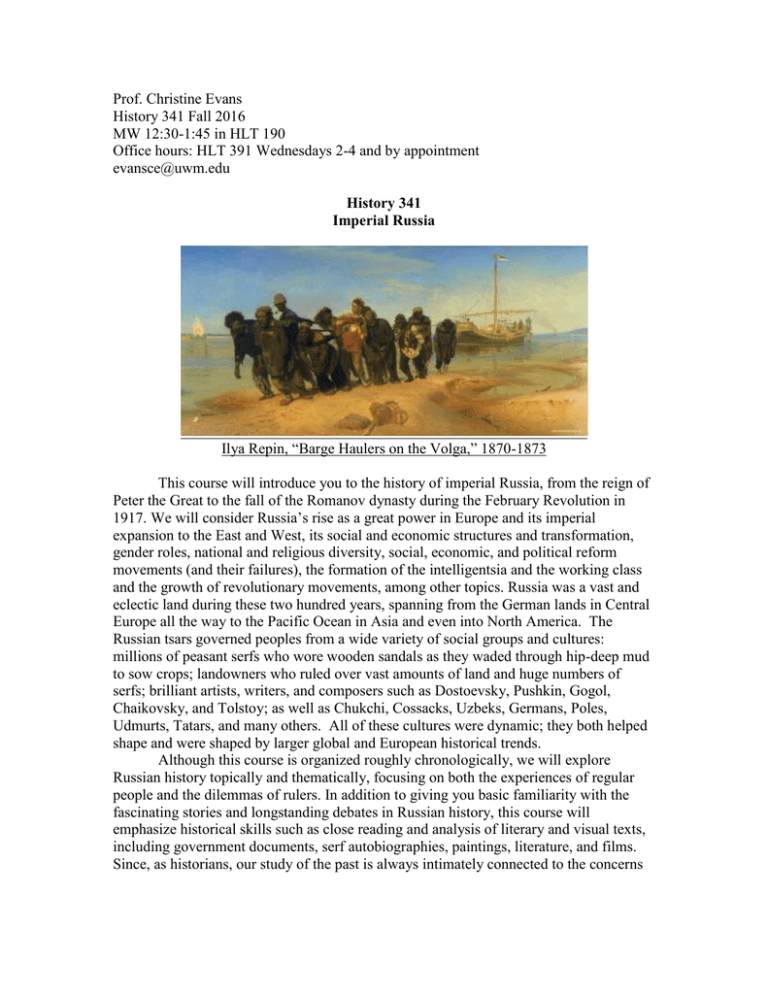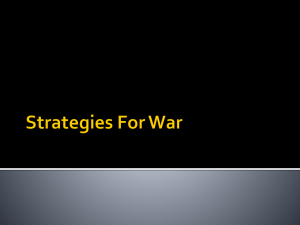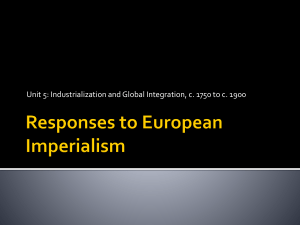Prof. Christine Evans History 341 Fall 2016 MW 12:30-1:45 in HLT 190
advertisement

Prof. Christine Evans History 341 Fall 2016 MW 12:30-1:45 in HLT 190 Office hours: HLT 391 Wednesdays 2-4 and by appointment evansce@uwm.edu History 341 Imperial Russia Ilya Repin, “Barge Haulers on the Volga,” 1870-1873 This course will introduce you to the history of imperial Russia, from the reign of Peter the Great to the fall of the Romanov dynasty during the February Revolution in 1917. We will consider Russia’s rise as a great power in Europe and its imperial expansion to the East and West, its social and economic structures and transformation, gender roles, national and religious diversity, social, economic, and political reform movements (and their failures), the formation of the intelligentsia and the working class and the growth of revolutionary movements, among other topics. Russia was a vast and eclectic land during these two hundred years, spanning from the German lands in Central Europe all the way to the Pacific Ocean in Asia and even into North America. The Russian tsars governed peoples from a wide variety of social groups and cultures: millions of peasant serfs who wore wooden sandals as they waded through hip-deep mud to sow crops; landowners who ruled over vast amounts of land and huge numbers of serfs; brilliant artists, writers, and composers such as Dostoevsky, Pushkin, Gogol, Chaikovsky, and Tolstoy; as well as Chukchi, Cossacks, Uzbeks, Germans, Poles, Udmurts, Tatars, and many others. All of these cultures were dynamic; they both helped shape and were shaped by larger global and European historical trends. Although this course is organized roughly chronologically, we will explore Russian history topically and thematically, focusing on both the experiences of regular people and the dilemmas of rulers. In addition to giving you basic familiarity with the fascinating stories and longstanding debates in Russian history, this course will emphasize historical skills such as close reading and analysis of literary and visual texts, including government documents, serf autobiographies, paintings, literature, and films. Since, as historians, our study of the past is always intimately connected to the concerns of the present, we will also pay close attention to the uses and interpretations of the imperial past in Russia today. Course Goals and requirements: By the end of this course, students will be able to: Understand and critically evaluate the major debates in Russian history from 1689-1917 and their relevance to the Russian present Critically analyze both primary and secondary historical sources, including visual primary sources Compare and evaluate historical arguments based on evidence Course requirements are two short papers (3 pp and 5 pp), a midterm and a final, as well as active participation in class discussions. Required Readings: The following books are recommended for purchase at People’s books. Less expensive, used copies are available on amazon, powells.com, and alibris.com. All books will also be on reserve at the reserve desk in Golda Meir Library. These books will be supplemented by additional primary sources and other readings that will be available on the course D2L site. Both books will also be available on reserve. 1) Nicholas Riasanovsky and Mark Steinberg. A History of Russia. 8th edition. Oxford University Press USA, 2010. ISBN-10: 019534197X . 7th edition (2004) is also acceptable, just make sure you have the single volume version (or both volumes of the two volume set). Buying an older edition is much cheaper!! 2) Leo Tolstoy. Hadji Murat (Vintage Classics) Trans. Richard Pevear and Larissa Volokhonsky. Vintage, 2012. ISBN-10: 0307951340






